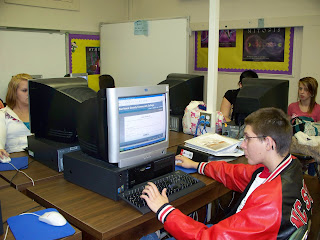
We live in a crazy educational world of acronyms. Wouldn’t you agree? How many educational acronyms can you name? Assuredly, we all recognize the power acronyms of the educational landscape: NCLB, AYP, ABC, AIG (and No, I am not referencing the insurance company), EC, ELL.
We seem to be almost rivaling the military as each new day dawns a new learning, acronym paradigm. It is not my intent to minimize the use of acronyms (nor even is it the thrust of this blog post), for each serves a purpose; but in all reality, they can lead to overuse and lose purposeful meaning. Prior to arriving at NCVPS, I worked in a very strategic and progressive district which used 56 different acronyms, carrying 56 different meanings. Leaders and Learners can get lost in the acronym maze.
However, I have one more to add to the growing list, BUT (and this is a big “but”--no pun intended, okay, maybe it was) this one is guaranteed to add value to your professional experience. Let me introduce the PLN, the Professional Learning Network. What is a PLN? How will it add value? In the “social network” (and I really prefer “academic,” “educational”, or “professional”) world of Facebook, Twitter, Edmodo, Ning, or Linkedin, the PLN is a mainstay -- it is what defines these tools, it is what gives these tools substance, it is what shapes these tools, it is what makes or breaks these tools.
A PLN is established when people come together to connect, collaborate, share, and create. I realized the power of the PLN when our staff plugged into Twitter and Facebook. Alvin Toffler penned, “The illiterate of the 21st century will not be those who cannot read and write, but those who cannot learn, unlearn, and relearn.” So, it is here through our PLN where we “learn, unlearn, and relearn.”
Continue reading here . . . .
























